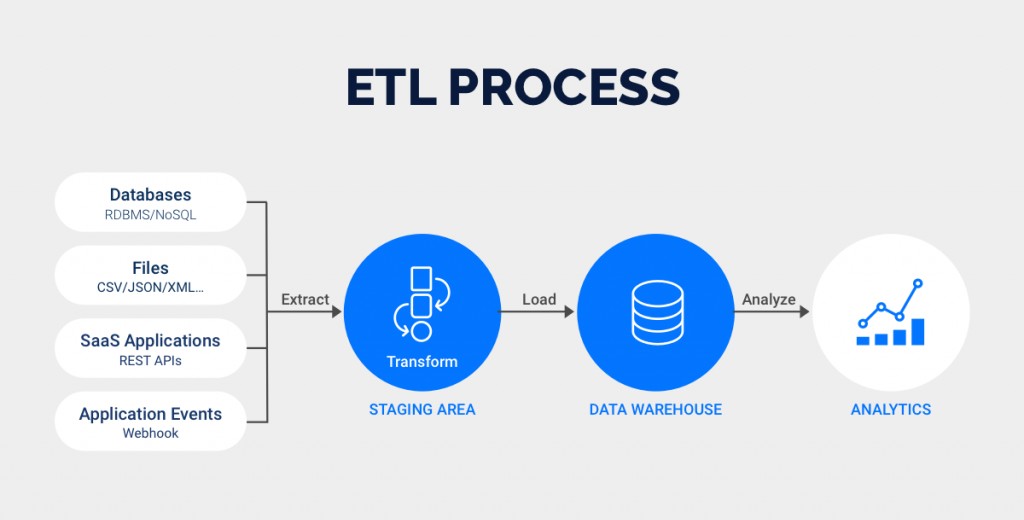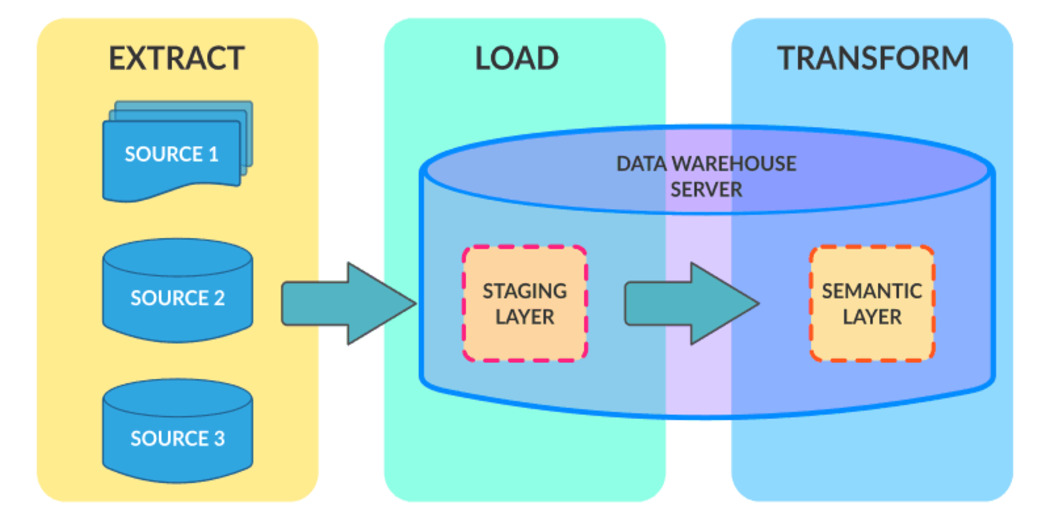This article was published as a part of the Data Science Blogathon.
Introduction
At the highest level, ETL converts your data before uploading, while ELT converts data only after uploading to your repository.
In this post, we will take a closer look at the differences between the way ETL and ELT work to help you determine which is the most efficient data processing system you have.
If you really like the design and layout differences, check out some of our blog posts here.
ETL (extract, modify, upload) has been around for decades and has been a way to collect and process data into a single format. However, with the cloud data storage that comes with the image, ELT (extract, load, transform) has emerged as a new way of collecting data.
Whether you use ETL or ELT, you will take three important steps.
- Extract: In this step (which is always the first one), you will extract the data from all your data sources. These releases may appear on linked websites or informal data sources such as photos and emails.
- Convert: In this step, you clean, process, and modify the data, and place it in your existing data storage format.
- Upload: This is a step in which you upload data to your archive and analyze it using the appropriate business intelligence tool.
So, which is the best option for you? The answer lies in the details of the procedures.
ETL Process

1) Extraction Process
As shown in the image above, the ETL tool will extract the data from your data sources. You can have a variety of data sources from the site and flat files to the REST APIs that release application data.
2) Transformation Process
Data conversion takes place on stage when the ETL tool has extracted the data. It is necessary to have a stage location as data sources may output data at different times.
For example, a sales website will have data that is updated daily, while an employee website may have a monthly data release.
3) Loading Process
In the final upload step, the ETL tool will store the converted data in your database.
Benefits of ETL
- Manage data storage: Is your data storage a cost-effective system? If so, using ETL may help you keep your storage costs down. ETL tools will change and filter to save only the data you need. This will reduce the use of data storage.
- Compliance with security regulations: You may be complying with data privacy laws such as GDPR, SOC2, HIPAA or your company’s specific requirements. Such rules usually require that you delete, encrypt, or encrypt sensitive data such as emails or IP addresses before storing them in your local archive. You can easily achieve this with the ETL process by hiding or deleting data in the conversion phase.
Disadvantages of ETL
They have some weaknesses though. ETL tools, in general, are not as good at real-time or much-needed data access. They were intended to make the most of the batch mode of operation. It should be used for well-established data conversion, which changes slightly in the database. In addition, ETL is an IT tool that is not directly accessible to data statistics and business users.
- Low flexibility: Do you have input data sources and formats that can change constantly? If you are using ETL, you will need to adjust such format changes and edge conditions in advance. If not, you will need to stop and adjust the ETL process in all edge cases. This can lead to significant maintenance costs.
- Slow: You may need to wait until all the changes are complete in order to upload data to the warehouse.
- Continuous care: As mentioned earlier, you may need to continuously maintain the ETL process to make sure it is up to date with your changing input sources.
- High initial costs: The initial costs of setting up your ETL process can be high, as you may need to specify the processes and changes you will need for your project.
ELT Process

The transition from ETL to ELT has taken place with 2 important changes:
- an increase in the use of random data
- and the recent outbreak (and reduced costs) of cloud-based storage systems.
Converting random data such as photos, audio, and video can take some time. This can slow down the ETL process. Therefore, the data is stored first in the storage systems so that the transformation can take place as needed.
Switching to ELT is heavily supported by cloud storage technologies such as data storage and data pools. These latter systems support unstructured data storage and making faster and greater data changes.
Benefits of ELT
- Acceleration: In the ELT process, no waiting is involved. The best ELT tools will instantly load data into your warehouse when it is ready for conversion.
- Flexible: Since conversions do not need to be defined in the first place, you can easily integrate new and different data sources with the ELT process.
- Low initial cost: ELT tools can easily simplify the ride data process. Since you do not need to explain the changes, the initial cost is lower compared to ETL.
- Less Care: In contrast to ETL, you will have less maintenance on your plate as the process is simpler and more automatic. Since conversion is the last step in the process, it is easy to fix bugs in your conversion process. Unlike ETL, you can also use the updated version only to get the right output.
- High Rate: If the amount of data you use increases, you can quickly expand your storage in the cloud. ELT processes can easily adapt to such conditions and control the import of large amounts of data, while ETL processes may need to be redefined.
Disadvantages of ELT
There are many systems needed to store ELT data, but the benefits outweigh the costs if the flexibility and extended power are what you wish.
- Data security risks: Data security can be a concern when loading large amounts of raw data into your storage. To reduce the security risk, you will need to manage user access and raw data stored in your data repository.
- Low compliance with data security regulations: Since data is stored with minimal processing, you may need to take additional steps to ensure compliance with data security regulations. Many data repositories, such as Panoply, have built-in security protocols including GDPR, HIPAA, and SOC2 to support data compliance.
When Should You Use ELT Instead of ETL?
.jpg)
Now that you know the difference between ETL and ELT, you may be wondering just what is the best option for you.
Here are some practical situations where using ELT will give you a better result:
- If you have a lot of data to consider: If your project has a large amount of data that needs to be loaded and analyzed, you will benefit from using ELT. Unlike ETL, collecting your data in one place will take less time with ELT. After uploading, ELT will use the fast processing power of cloud storage to make changes to your data.
- If you need to store data quickly: The ELT tool can collect all your raw data in less time compared to using ETL.
- If you need crude history data for future analysis: If your business will benefit from data analysis trends, you may need to keep raw data nearby. Since ELT stores all your raw data in the data warehouse, you will not need to reload the data during analysis.
- If you need a flexible data integration process: If your company has data sources and formats that are constantly changing, ELT will create a flexible process to meet these needs.
Conclusion
Both ETL & ELT will achieve your goal of combining data in different ways. Choosing the right solution can depend on a variety of factors, such as:
- data you have
- the type of storage you use
- and the long-term needs of your business
Keep the pros and cons of both in mind before using it. Depending on what you are dealing with, ETL vs ELT is something to consider. ELT is flexible and easy to make changes internally, so it is usually a better choice when working with data pools. ETL has more structure in its line, and modification (depending on the complexity of the script) may be difficult to change depending on the type of data. Therefore, ETL is sometimes a better choice when it comes to data storage.
The media shown in this article is not owned by Analytics Vidhya and is used at the Author’s discretion.







